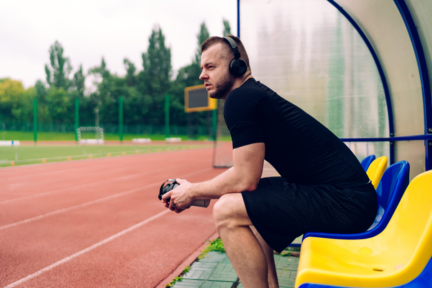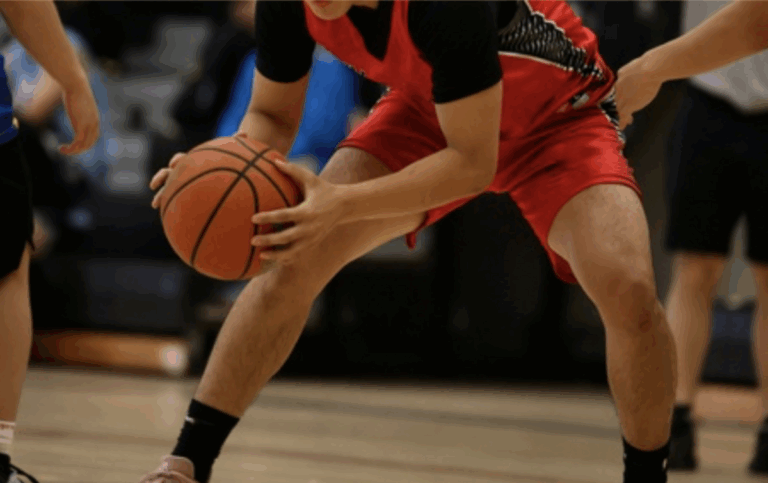As a college athlete, establishing a strong identity is crucial for your future success, both on and off the field. Your athletic identity is not just about your performance; it’s about the values and strengths you represent. We will guide you through the process of building a lasting connection with your audience.
By focusing on your unique strengths and athletic identity, you can create a presence that resonates with fans and sponsors alike. This involves a strategic approach to showcasing your talents and engaging with your audience. We will explore the key elements of college athlete personal branding and provide a roadmap for your success.
Developing a long-term brand strategy is essential for sustained success. It’s about creating a consistent and authentic image that evolves with your career. We will help you navigate this process, ensuring you build a brand that opens doors to new opportunities.
Key Takeaways
- Establishing a strong athletic identity is crucial for college athletes.
- Focusing on unique strengths and values helps create a lasting connection with the audience.
- A strategic approach to personal branding is essential for resonating with fans and sponsors.
- Developing a long-term strategy ensures sustained success and career growth.
- Consistency and authenticity are key to a successful personal brand.
The Fundamentals of Personal Branding for College Athletes
Developing a personal brand as a college athlete involves showcasing your unique strengths, values, and personality. This process is not just about becoming recognizable; it’s about creating a lasting impression that can open doors to various opportunities in your athletic and professional career.
What Defines a Personal Brand in Sports
A personal brand in sports is defined by a combination of your athletic abilities, personality, values, and unique characteristics. As NBA star Stephen Curry once said,
“Your brand is what people say about you when you’re not in the room.”
This quote emphasizes the importance of building a reputation that precedes you, based on your actions, achievements, and the values you represent.
Your personal brand is essentially your promise to your audience – it’s what you stand for, what you believe in, and how you present yourself to the world. For college athletes, this could mean showcasing not just their athletic prowess, but also their academic achievements, community involvement, and personal story.
Why Starting in College Creates Competitive Advantage
Starting to build your personal brand in college creates a significant competitive advantage. By establishing your brand early, you have the opportunity to grow and evolve with your audience, creating a loyal following that can accompany you through various stages of your career.
According to a recent study, athletes who have a strong personal brand can increase their marketability and attract more endorsement opportunities. By leveraging social media platforms and engaging with your audience, you can build a brand that is not just recognizable but also relatable and authentic. This early start allows you to differentiate yourself from others and be better positioned for future success, whether in professional sports or other areas of your life.
Navigating NIL Regulations in College Athletics
As a college athlete, understanding the intricacies of NIL regulations is crucial for maximizing your personal brand’s potential. The introduction of Name, Image, and Likeness regulations has opened up new avenues for athletes to monetize their brand, but it also comes with a set of rules and compliance requirements that must be navigated carefully.
Current NIL Rules and Compliance Requirements
The current NIL rules allow college athletes to profit from their name, image, and likeness through various means such as endorsements, social media, and personal appearances. However, compliance requirements dictate that athletes must:
- Disclose all NIL deals to their institution
- Ensure that NIL activities do not conflict with existing team or institutional contracts
- Comply with state laws and institutional policies regarding NIL
It’s essential for athletes to stay informed about the evolving landscape of NIL regulations to avoid any potential violations.
Monetization Opportunities Under NIL
The NIL regulations have unlocked various monetization opportunities for college athletes, including:
- Brand endorsements and sponsorships
- Social media influencing and content creation
- Personal appearances and autograph sessions
- Selling merchandise and products
Athletes can leverage their personal brand to capitalize on these opportunities, but they must do so within the bounds of the regulations.
School-Specific Policies and Restrictions
While NIL regulations provide a framework, individual schools may have specific policies and restrictions. Athletes must familiarize themselves with their institution’s policies to ensure compliance. Some schools may have stricter guidelines or additional requirements for NIL activities.
By understanding and adhering to these regulations, college athletes can successfully navigate the NIL landscape and build a strong personal brand.
Discovering Your Unique Athletic Identity
Discovering your unique athletic identity is a pivotal step in differentiating yourself in the competitive world of college athletics. Your athletic identity encompasses not just your skills on the field but also your personality, values, and the unique story you tell. It’s what sets you apart from other athletes and makes you relatable or memorable to fans and potential sponsors.
Assessing Your Athletic Strengths and Style
To discover your athletic identity, start by assessing your athletic strengths and style. Consider what you’re exceptionally good at, whether it’s your speed, agility, or strategic thinking during games. Your style, including how you interact with teammates and opponents, also plays a crucial role. Reflecting on these aspects helps you understand your value as an athlete.
Leveraging Your Personal Journey and Background
Your personal journey and background are integral to your athletic identity. This includes overcoming challenges, your family history, or your cultural background. By sharing these stories, you can create an emotional connection with your audience, making your brand more relatable and authentic. It’s about highlighting the unique experiences that have shaped you into the athlete you are today.
Defining Your Values and Authentic Voice
Defining your values and authentic voice is crucial in expressing your athletic identity. Your values guide your actions and decisions, both on and off the field, while your authentic voice is how you communicate these values to the world. It’s essential to be genuine and consistent in your messaging to build trust and loyalty among your fans and followers.
Developing a Long-Term Personal Brand Strategy
Developing a long-term personal brand strategy is essential for college athletes looking to make a lasting impact in their sport. A well-planned brand strategy not only enhances their collegiate experience but also opens doors to future opportunities.
Setting Strategic Brand Objectives
Setting clear brand objectives is the foundation of a successful personal brand strategy. This involves defining both short-term and long-term goals.
Short-Term College Goals
In the short term, your brand objectives might include increasing your social media following, securing sponsorships, or establishing yourself as a leader among your peers. For instance, you might aim to grow your Instagram following by 1,000 new followers within the next three months by posting regular updates about your athletic achievements and personal journey.
Post-Graduation Vision
Long-term objectives, on the other hand, might focus on your post-graduation aspirations, such as transitioning into a professional sports career, starting a sports-related business, or becoming a sports commentator. As LeBron James once said, “The biggest thing is to focus on the process, not the outcome.” Focusing on your long-term vision will help guide your short-term decisions.
Crafting Your Brand Mission Statement
A brand mission statement serves as a guiding light for your personal brand, encapsulating your values, goals, and unique value proposition. It should be concise, yet meaningful. For example, “To inspire young athletes through my dedication, perseverance, and passion for sports” is a mission statement that clearly communicates your brand’s purpose.
Creating a Brand Roadmap Beyond College
Once you have your brand mission statement, the next step is to create a roadmap that outlines how you plan to achieve your long-term brand objectives. This roadmap should include key milestones, such as networking opportunities, skill development, and strategic partnerships. As Tom Brady emphasizes, “The biggest thing for me is consistency.” Consistency in your branding efforts will be key to your long-term success.
By following these steps, you can develop a comprehensive brand strategy that not only enhances your college experience but also sets you up for success beyond your collegiate career.
Building Your Digital Footprint as an Athlete
Building a digital footprint is no longer optional for college athletes; it’s a necessity. In today’s digital age, having a strong online presence can significantly impact your athletic career and future opportunities.
Platform Selection Based on Sport and Audience
Choosing the right social media platforms is crucial for athletes. Different sports and audiences gravitate towards different platforms. For instance, visually-oriented sports like gymnastics or basketball may thrive on Instagram, while football or basketball players with a strong narrative might prefer YouTube or TikTok.
When selecting platforms, consider where your audience is most active and how you can best showcase your athletic journey. Understanding your audience’s preferences is key to creating a compelling digital footprint.
| Platform | Audience | Content Type |
|---|---|---|
| Visual-centric audience | Photos, Stories, Reels | |
| YouTube | Audience seeking in-depth content | Vlogs, Highlights, Interviews |
| TikTok | Younger, trend-focused audience | Short-form videos |
Content Creation Frameworks for Athletes
Creating engaging content is vital for building a strong digital footprint. Athletes can leverage various content types to showcase different aspects of their lives and careers.
Behind-the-Scenes Training Content
Sharing behind-the-scenes training content gives fans a glimpse into the hard work and dedication that goes into being a college athlete. This can include workout routines, training tips, and personal challenges.
Showcasing Academic and Community Involvement
Highlighting academic achievements and community involvement demonstrates an athlete’s well-rounded character. This can include study routines, volunteer work, and community engagement.
Game Day and Competition Highlights
Sharing game day and competition highlights showcases an athlete’s performance and achievements. This can include game footage, post-game interviews, and analysis.
Maintaining Consistency Across Platforms
Consistency is key to maintaining a strong digital footprint. Athletes should ensure that their branding, tone, and quality of content are consistent across all platforms. This helps to build a recognizable and reliable online presence.
By regularly posting high-quality content and engaging with their audience, athletes can foster a loyal fanbase and attract potential sponsors. Consistency and engagement are crucial for long-term success in the digital landscape.
“The key to a successful digital footprint is not just about being present online, but about being consistent and engaging with your audience.” — John Smith, Sports Marketing Expert
Strategic Networking and Partnership Building
As a college athlete, building a strong personal brand involves more than just athletic prowess; it requires strategic networking and partnership building. By leveraging the right connections and forming meaningful partnerships, you can elevate your brand and open doors to new opportunities.
Leveraging Alumni Networks and Team Connections
One of the most valuable resources available to college athletes is their alumni network. By connecting with former athletes who have successfully transitioned to professional careers, you can gain insights into the industry and potentially secure mentorship or job opportunities. Additionally, fostering strong relationships with your current teammates and coaches can lead to recommendations and introductions that benefit your personal brand.
Approaching and Securing Brand Partnerships
Securing brand partnerships is a critical aspect of building a successful personal brand. To achieve this, you must be proactive in approaching potential partners and presenting compelling proposals.
Creating Compelling Partnership Proposals
A well-crafted proposal should highlight the mutual benefits of a partnership, including how your personal brand aligns with the company’s values and target audience. Use data and metrics to demonstrate your influence and reach, and be clear about what you’re asking for in return.
Negotiating Fair Compensation
When negotiating with potential partners, it’s essential to understand your worth and be prepared to articulate it. Consider factors such as your social media following, engagement rates, and the value you bring to the partnership. Be confident but flexible, and don’t be afraid to walk away if the terms aren’t favorable.
Developing Media Relationships
Building relationships with media representatives can help increase your visibility and credibility. By establishing yourself as a reliable source and providing valuable insights, you can secure media coverage that enhances your personal brand. Consider reaching out to sports journalists, bloggers, and influencers in your niche to start building these connections.
| Networking Strategy | Description | Potential Benefits |
|---|---|---|
| Alumni Networking | Connecting with former athletes for advice and opportunities | Mentorship, job opportunities, industry insights |
| Brand Partnerships | Collaborating with brands that align with your personal brand | Increased visibility, credibility |
| Media Relationships | Building connections with media representatives | Media Relationships |
Balancing Athletic Performance, Academics, and Brand Building
The multifaceted role of a college athlete necessitates a harmonious blend of athletic excellence, academic rigor, and thoughtful personal branding. As we navigate the complexities of this balancing act, it’s essential to consider the interplay between these different aspects of a college athlete’s life.
Effective time management is crucial for college athletes striving to excel in their sport, achieve academic success, and build a personal brand. By prioritizing tasks, setting realistic goals, and utilizing scheduling tools, athletes can optimize their daily routines to accommodate the demands of training, competition, and brand development.
Effective Time Management for Student-Athletes
To manage their time effectively, student-athletes should first identify their key objectives in athletics, academics, and brand building. By understanding their priorities, athletes can allocate their time more efficiently, ensuring that they meet their commitments in each area.
| Activity | Time Allocation | Priority Level |
|---|---|---|
| Athletic Training | 4-6 hours/day | High |
| Academic Study | 2-3 hours/day | High |
| Brand Building Activities | 1-2 hours/day | Medium |
When to Consider Management or Representation
As college athletes progress in their careers, they may need to consider seeking professional management or representation to help navigate the complexities of their personal brand. This decision should be based on factors such as the athlete’s level of competition, their brand’s growth, and their individual goals.
Setting Boundaries to Protect Performance
To maintain peak athletic performance, it’s essential for college athletes to set boundaries around their time and energy. By establishing clear limits on their commitments and prioritizing rest and recovery, athletes can protect their performance and ensure long-term success.
By implementing these strategies, college athletes can achieve a balance between athletic performance, academic achievement, and personal brand development, setting themselves up for success both on and off the field.
Protecting and Evolving Your Long-Term Personal Brand
As a college athlete, building a personal brand is just the beginning; protecting and evolving it is crucial for long-term success. Your personal brand is a valuable asset that requires ongoing management to maintain its integrity and relevance in the ever-changing sports landscape.
Legal Considerations for Athlete Brands
Understanding the legal aspects of your personal brand is essential for its protection. This includes being aware of trademark laws and contract obligations.
Trademark Protection
Trademark protection is vital to safeguard your brand identity, including your name, logo, and slogans, from being used without authorization. Registering your trademarks can provide legal recourse in case of infringement.
Contract Review Best Practices
When entering into contracts related to your brand, such as sponsorship deals or endorsement agreements, it’s crucial to review them carefully. Understanding the terms, including obligations, compensation, and exit clauses, can help you make informed decisions.
Crisis Management and Reputation Protection
Crisis management is a critical component of protecting your personal brand. Developing a strategy to address potential crises, such as social media backlash or public controversies, can help mitigate damage to your reputation.
Adapting Your Brand Through Career Transitions
As you transition from college athletics to professional sports or other careers, your personal brand will need to evolve. Being proactive in adapting your brand to new contexts can ensure its continued relevance and success.
Conclusion
Establishing a strong long-term personal brand is crucial for college athletes looking to make a lasting impact in the sports industry. By understanding the fundamentals of athlete branding and navigating the complexities of NIL regulations, you can set yourself up for success both during and after your college years.
Developing a robust brand strategy, building a professional digital footprint, and engaging in strategic networking are key steps in creating a compelling personal brand. As you balance athletic performance, academics, and brand building, it’s essential to stay focused on your long-term objectives and adapt to the ever-changing landscape of college athletics.
By following the guidelines outlined in this article, you can create a lasting legacy as a college athlete and establish a strong foundation for your future career. Effective athlete branding not only opens doors to new opportunities but also fosters a strong connection with your audience, ultimately contributing to a successful and enduring long-term personal brand.
FAQ
What is a personal brand, and why is it important for college athletes?
A personal brand is a unique combination of your athletic abilities, personality, values, and characteristics. It’s essential for college athletes as it helps differentiate you from others, creates a competitive advantage, and opens doors to new opportunities.
How do I define my personal brand as a college athlete?
To define your personal brand, assess your athletic strengths and style, leverage your personal journey and background, and define your values and authentic voice. This will help you create a brand that resonates with your audience.
What are the current NIL rules and compliance requirements?
The current NIL rules allow college athletes to monetize their name, image, and likeness. Compliance requirements vary by state and institution, so it’s crucial to understand the specific regulations governing your college or university.
How can I monetize my NIL as a college athlete?
You can monetize your NIL through various means, such as endorsement deals, sponsored content, and merchandise sales. Be sure to review your college or university’s NIL policies and consult with a professional to ensure compliance.
What is the importance of having a strong digital footprint as an athlete?
A strong digital footprint helps you build a compelling online presence, attract fans and sponsors, and establish your personal brand. This can be achieved by selecting the right platforms, creating engaging content, and maintaining consistency across all platforms.
How do I balance athletic performance, academics, and brand building as a college athlete?
Effective time management is crucial to balancing athletic performance, academics, and brand building. Prioritize your responsibilities, set boundaries, and consider seeking professional guidance to ensure you’re managing your time effectively.
What are some key considerations for protecting and evolving my long-term personal brand?
To protect and evolve your personal brand, consider legal aspects such as trademark protection and contract review best practices. Additionally, be prepared to adapt your brand through career transitions and have a plan in place for crisis management and reputation protection.
How can I leverage alumni networks and team connections to build my personal brand?
Leveraging alumni networks and team connections can help you build relationships, access new opportunities, and gain valuable insights. Attend networking events, engage with your college or university’s alumni association, and stay connected with your teammates and coaches.
What are some best practices for creating compelling partnership proposals as an athlete?
When creating partnership proposals, highlight your unique strengths, showcase your brand’s value, and demonstrate how the partnership can benefit both parties. Be sure to tailor your proposal to the specific brand or sponsor and include relevant metrics or data.






Leave a Comment